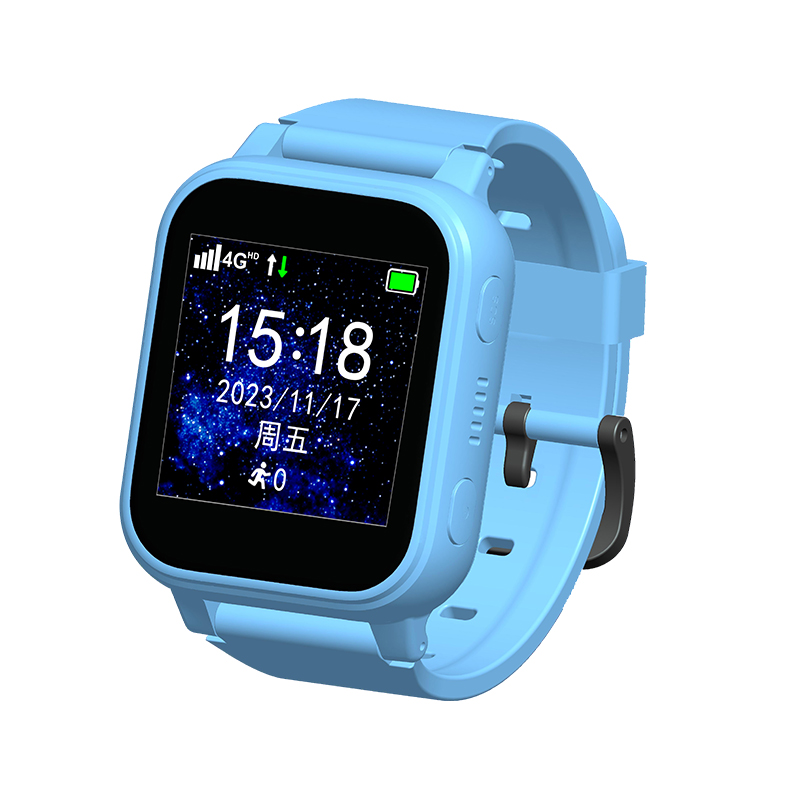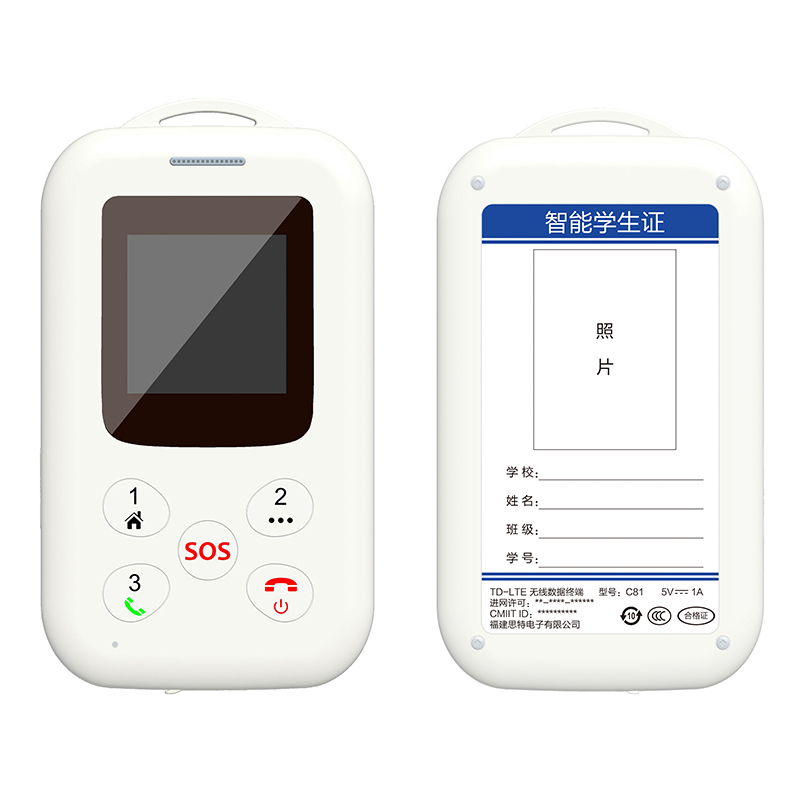What technology does the kids' cell phone's location tracking function use to ensure accuracy?
Release Time : 2025-11-06
The accuracy of children's cell phone positioning relies on the synergy of multi-mode positioning technologies and deep optimization of hardware and software. Currently, most mainstream children's cell phones employ a five-fold positioning system: GPS + base station + WiFi + A-GPS + sensor. By integrating the advantages of different technologies, they achieve full coverage and high-precision tracking in both indoor and outdoor scenarios.
GPS (Global Positioning System) is the core foundation of children's cell phone positioning. It receives signals from multiple satellites, calculates the distance between the device and the satellites, and synthesizes the results to obtain accurate coordinates. In open environments, GPS positioning errors can be controlled within 5 meters, meeting the location tracking needs of outdoor activities. However, GPS signals may weaken due to obstructions from tall buildings, trees, or rainy weather, leading to positioning deviations. In this case, base station positioning serves as a supplementary method. It calculates the distance between the device and the base station using the mobile network base station and combines this with the triangulation principle, still providing a positioning range of 100-500 meters in areas with weak signals, ensuring the continuity of basic location information.
WiFi positioning further optimizes accuracy in indoor scenarios. The built-in WiFi module in kids' cell phones scans for nearby hotspots and matches their MAC addresses with location information in a database, reducing positioning errors to within 20 meters. This technology is particularly suitable for indoor environments such as shopping malls and schools, compensating for the limitations of GPS in enclosed spaces. For example, when a child enters a library or classroom, WiFi positioning can quickly pinpoint a specific floor or area, helping parents accurately track their child's movements.
A-GPS (Assisted GPS) technology uses the mobile network to obtain satellite ephemeris data in advance, accelerating the initial positioning time of the GPS module and improving positioning stability when the signal is weak. In kids' cell phones, A-GPS shortens the waiting time from power-on to obtaining an accurate location, avoiding security risks caused by positioning delays. For example, when a child moves quickly after school, A-GPS ensures that parents receive updated location information promptly, reducing blind spots in monitoring.
Sensor-assisted positioning is another key factor in the accuracy of kids' cell phone positioning. The built-in accelerometer and gyroscope monitor the device's motion, combining step count and direction determination to correct drift errors from GPS or base station positioning. For example, when a child runs in a park, sensors can analyze their movement trajectory to help the positioning system more accurately depict the child's path, avoiding location jumps caused by signal fluctuations.
The integration of multi-mode positioning technologies not only improves positioning accuracy but also enhances environmental adaptability. For instance, the Care 360° Kids' Cell Phone uses a triple system of GPS + GPSOne (base station assisted positioning) + wireless data exchange. Outdoors, it achieves 5-meter accuracy via GPS, while indoors, it relies on base stations and WiFi to keep the error within 200 meters. Simultaneously, a professional service system provides real-time location feedback, ensuring parents can always track their child's whereabouts. This combination of technologies allows the Kids' Cell Phone to maintain stable positioning performance even in complex urban environments.
Hardware design and software algorithm optimization are equally important. The Kids' Cell Phone uses a low-radiation antenna design and a metal shielding layer to reduce signal interference, while employing a high-sensitivity GPS chip to improve signal reception. On the software side, the positioning algorithm is continuously optimized through machine learning, dynamically adjusting the positioning strategy based on historical trajectories and environmental characteristics to further reduce errors. For example, when the system detects that a child has been in a fixed area for an extended period, it automatically reduces the positioning frequency to save power, while increasing the sampling rate when the child moves to ensure accurate location at critical moments.
From a functional perspective, the kids' cell phone's positioning system has transcended the scope of a single technology, forming a complete ecosystem of "hardware foundation + multi-mode fusion + algorithm optimization." This technological architecture not only meets parents' needs for precise monitoring but also provides direction for innovation in child safety products. In the future, with the development of 5G networks and IoT technologies, the kids' cell phone's positioning function will further integrate advanced functions such as indoor mapping and behavioral analysis to build a more comprehensive safety protection network.







